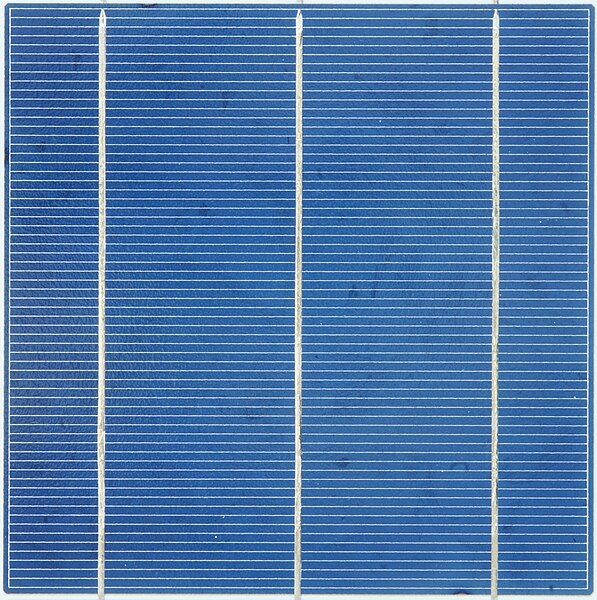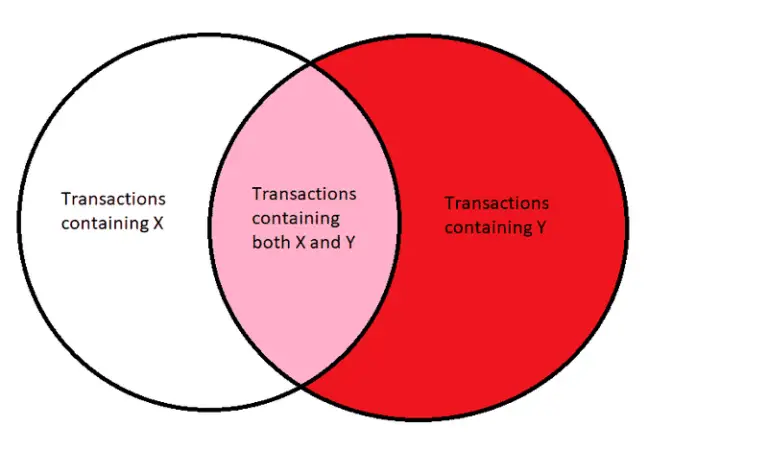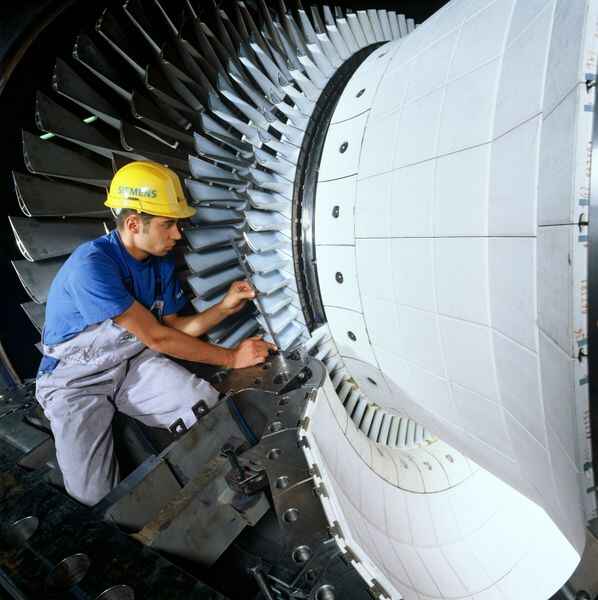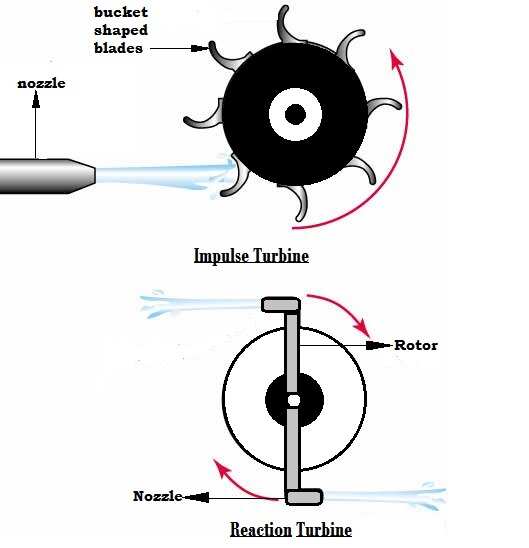Solar Panels Definition, History, Structure, Principle, Types, Applications
Solar Panels have become very common as one of the existing renewable energy technologies. In this article, we discuss solar panels extensively, as given by the following outline;
-Origin and History of the Development of Solar Panels
-Construction and Structure of Solar Panels
-Comparison of the Types of Solar Panels
-How Much do Solar Panels Cost?
-Efficiency and Performance of Solar Panels
-Factors that Determine Performance of Solar Panels
-Mounting and Installation of Solar Panels
-Applications and Benefits of Solar Panels
-Limitations in the Use of Solar Panels
What is a Solar Panel?
To understand the nature and capabilities of a solar panel, we must first consider the concept of Solar Energy.
Derived entirely from the Sun; Solar Energy is one of the types of renewable energy which can be harnessed from natural resources in a sustainable and consistent manner. The development of solar energy and renewable technology in general, is one of the key measures which are being taken to achieve Sustainability in our society.
Solar Panels are devices which help to capture solar energy and convert it to electricity for utilization. Some solar panels also capture radiation from the sun in order to produce heat. By absorbing radiation from the Sun, these devices generate photo-induced current (also known as ‘photoelectricity’) through a photochemical reaction process [16].
‘Photovoltaic (PV) Panels’ is another term used to describe solar panels, because they are typically made up of arrays of solar PV modules (or solar cells), which are mounted on a supportive framework. The term is also used due to the fact that a solar panel generates electricity from solar energy through a phenomenon known as the Photovoltaic Effect.
Solar panels derive their importance from being useful for a wide variety of applications, which will be highlighted in this article.

Origin and History of the Development of Solar Panels
The background of solar panels can be traced back to the eighteenth century.
In the year 1767; Horace-Benedict de Saussure, a Swiss scientist, made one of the first-ever, modern, documented observations of the conversion of solar energy to other usable forms of energy [11]. This was achieved by the use of an insulated box within which three uniform layers of glass were placed in a parallel sequence.
The set-up by Horace-Benedict de Saussure has been described by some as a solar collector cell, and it showed that solar radiation could be captured and converted to heat which could be used in various ways.
In 1839, a physicist by the name; Edmond Becquerel, discovered what we now know as the Photovoltaic Effect [23]. This phenomenon simply involved the generation of electricity when solar radiation (sunlight) falls on the surface of a given material.
Taking a cue from Becquerel’s observations, Augustin Mouchot; a French Mathematician, began registering solar-powered engine patents two decades later, which attracted investors from within and beyond France.
In spite of the earlier design by Horace-Benedict de Saussure, Charles Fritts is widely credited with having designed, constructed and installed the world’s first genuine solar cell [3]. The construction of this cell was carried out in 1883, by laying a thin coat of gold on selenium plates [21].
This resulted in a planar cell that converted solar energy to electricity at a 1-2 percent rate. While 1-2 percent is a very low conversion rate (solar cells today generally have a conversion rate of at least 15 percent), it laid the foundation for later developments and improvements in the field of photoelectricity.
American inventor Russel Ohl, of Bell Laboratories is said to have pioneered the first silicon solar cell patent in the year 1941 [13]. Building on this development, the first elaborate solar panel was produced by Bell Laboratories in 1954 [19]. One of the earliest applications of solar panels was in the space industry, where space satellites were equipped with solar panels, mainly in order to supply power to auxiliary parts.
Also at Bell Laboratories, in the 1950s, Mohamed M. Atalla developed the thermal oxidation method of surface passivation for silicon solar cells, which is a very important method of enhancing the efficiency of solar panels [1].
The improvement of solar panel technology over the years has made solar panels to be more widely utilized in various industries. These improvements have also resulted in panels that are more efficient and reliable for electricity production and supply.
Construction and Structure of Solar Panels
Silicon is by far the most common material used in the construction the solar panel.
The process of manufacturing a silicon-based solar panel usually begins from constructing the solar cells.
Quartz is the raw material from which silicon is derived. This quartz is often gotten in the form of sand, which can be converted to a metallurgical grade of silicon when heated together with carbon in an arc furnace [2]. The silicon produced from this heating process often has a purity of up to 99 percent
After heating the quartz and deriving metallurgical grade silicon, the silicon is polymerized in a chemical process known as the Siemens Process, to produce polysilicon.
To convert the polysilicon to either P-type or N-type silicon, trace quantities of Phosphorus or Boron are added (this is known as ‘doping’). The resulting product is then casted into rectangular sections and may be cut using diamond wire, to produce thin rectangular wafers.
When manufacturing monocrystalline silicon cells, the silicon (after it has been doped) is subjected to heat at high pressure, to produce a large-crystals called Ingots [9]. This subjection of the doped silicon to high pressure and temperature is called the Czochralski process.
After cutting the ingot into rectangular wafers, a thin layer of N-type or P-type silicon is used to coat the surface of the wafers, after which metallic fingers and an anti-reflective layer are placed on the surface of the PV cell.
The solar (PV) cell is a key component of the solar panel. Other components which make up a solar panel include an aluminum frame, a rear back-sheet made of polymer, a layer of toughened glass, a junction box made up of connectors and diodes, and an encapsulation frame [12]. Each of these components is discussed briefly below;
1). Solar (PV) Cell of Solar Panels
A solar panel is incomplete without an array of solar PV cells.
The function of the PV cell is to convert solar radiation from sunlight, to electricity [14]. Different kinds of solar PV cells exist, and more developments and modifications are being made to improve the quality and reliability of this component.
Solar PV cells vary in terms of their efficiency, and this is mainly as a result of the composition, design, configuration and structure of the cell. The two main categories or types of solar PV cell are the polycrystalline and monocrystalline types. Solar panels may also be classified as monocrystalline or polycrystalline, based on the nature of PV cells that constitute them.
Based on the material used to dope the silicon while manufacturing the solar cell, it may be either P-Type or N-Type. These two types are usually placed next to each other in the cell. as discussed below. When arranging solar cells in a solar panel, they are linked together with electrical conductor materials known as busbars which make it possible for current to flow from one cell to the other [18].
In a solar cell, the N-type and P-type silicon categories differ in terms of their elemental composition. For N-type solar cells, the silicon is doped by adding to it atoms like phosphorus which have five electrons in their outer energy level.
Because silicon has four electrons in its outer shell, the two atoms (silicon and phosphorus) can bond, leaving one electron still free-roaming
P-type silicon is generally produced by doping silicon with atoms that have one-less outer electron, such as gallium or boron. Due to this difference in number of outer electrons, a hole is created when silicon bonds with the gallium or boron atom.
Within the structure of a solar cell, a layer P-type silicon is usually placed adjacent to a layer of N-type silicon. This creates an electron concentration gradient between the two layers. because the N-type layer has an excess of negatively charged electrons. and the P-layer has an excess of positively-charged holes.
As the electrons on the N-type silicon migrate across the junction between the two layers, to fill the holes in the P-type silicon, it creates an electron-filling region around the junction which is called the ‘depletion zone.’

2). Aluminum Frame
Basically, the function of the aluminum frame is to provide firm support and protection to the solar panel.
This is a very important function, considering that the solar cells require a structure which can hold them in their position within the panel, and which will protect them from disorientation or damage. The structural configuration of aluminum frames may vary depending on the nature of the solar cells that make up the panel, the existing needs, and the preference of the manufacturer. Aluminum frames also make it possible for solar panels to be mounted.
3). Back-sheet of Solar Panels
As the name implies, the back-sheet of a solar panel is the final underlying layer in the structural makeup of the panel.
Back-sheets act as insulation material, while also preventing moisture from entering the panel. They also provide mechanical support to the panel. Polymer material is used to produce back-sheets, and the polymer used may vary depending on the quality required. Types of polymers used to manufacture the back-sheet of a solar panel include PET, PVF and PP.
Bi-facial solar panel (also known as ‘dual glass’ solar panel) does not use a polymer back-sheet as the underlying layer. Rather, another glass sheet is used.
4). Glass Layer of Solar Panels
In a solar panel, a layer of toughened glass is usually placed over the surface of the solar-cell array.
The function of the glass sheet is mainly to protect the PV cells from extreme weather impact, physical damage from mechanical load, and debris.
In order to ensure that the efficiency of the solar panel is not reduced, the glass sheet is made to be highly transmitting and non-reflective [17]. This allows the maximum amount of solar radiation to reach the solar cells through the glass.
5). Junction Box
In order to provide a secure attachment for the interconnected cables of the solar panel, a junction box is needed.
Generally, the junction box is constructed in the form of an enclosure which is weatherproof and houses the panel connection cables. To maintain this component, it must be protected from dirt and moisture.
Alongside the cables, a junction box also houses the bypass diodes of a solar panel. These diodes are required in order to prevent reverse flow of current when electricity production by the solar cells has declined.
Usually, one bypass diode is assigned to each of the solar-cell arrays on a solar panel. This ensures that there is no backflow of current for each of these arrays.
Bypass diodes also typically have a definite lifespan after which they lose their effectiveness. They therefore need to be replaced regularly.
6). Encapsulation Frame of Solar Panels
The encapsulation frame provides a solar panel with protection from mechanical damage, humidity and high temperature [20].
It is often made from Ethylene Vinyl Acetate (EVA), which is a plastic polymer with specialized properties that include transparency, durability and resilience [5]. The encapsulation frame provides the basic structure in which the solar cell array is imbedded.
How do Solar Panels Work
Solar Panels are made up of solar cells.
In each solar cell, as we have already mentioned, N-type and P-type semiconductor (silicon) layers occur adjacent to each other.
As electrons migrate from the N-type to the P-type semiconductor, they fill up the holes in the depletion zone, so that the P-type segment of the depletion zone becomes negatively charged, and the N-type segment becomes positively charged.
The charge-gradient which is created by this distribution of electrons makes it possible for the flow of electric current through the cell to occur.
When sunlight strikes the solar panel, it causes electrons from the P-type layer of the solar cell to be released.
This leads to an imbalance in the distribution of negative and positive charges within the cell, resulting in the flow of more electrons across the depletion zone between the N-type and P-type layers. The continuous flow of these electrons is what produces electric current.
We can also understand how a solar panel works, from the perspective of the photoelectric effect. Sunlight (or solar radiation) contains energetic particles called photons. When this sunlight strikes a solar panel, it energizes the electrons in the panel, leading to their migration away from the P-type layer of the solar cell and through any available conductor material (usually the metallic contacts between solar cells, and the electric wires linked to the panel).
Electricity generated by the solar panel is usually in form of direct current (DC). This has to be converted to alternating current (AC) to make it suitable for use.
Types of Solar Panels
1). Monocrystalline Solar Panel
By far the most common category, monocrystalline solar panel has undergone the most development and modification, and may therefore be considered the most efficient type of solar panel.
Another term used to refer to monocrystalline solar panel is ‘single-crystal’ solar panel. This is because, as the name implies, the solar cells which make up these panels are designed from a single crystal of pure silicon (also called an Ingot), which is manufactured at high temperature by the Czochralski process [15].
Monocrystalline panels usually have a uniform black appearance, and are generally priced highly compared to other types. This is mainly due to their costly manufacturing process and relatively high efficiency.

2). Polycrystalline Solar Panel
As the name implies, polycrystalline solar panel is composed of cells that are designed from more than one silicon crystal [6].
The manufacture of polycrystalline solar panel involves heating different silicon crystals in a single melt, and then allowing it to cool. The resulting crystalline silicon composite is then sliced into thin sections (wafers) that are used to make solar PV cells.
Unlike monocrystalline solar panel, the polycrystalline panel does not have uniform properties. The overall appearance of polycrystalline solar cells is grainy and bluish. Polycrystalline solar panel is also generally less efficient than the monocrystalline panel.

3). Thin-Film Solar Panel
Although relatively flexible and easy to handle, thin-film solar panel is not generally optimal in terms of its efficiency, compared to other types.
Thin-film solar panels are of various kinds. Not all of these kinds of thin-film panels are made from silicon. copper indium gallium selenide (CIS/CIGS), amorphous Silicon (a-Si), and cadmium telluride (CdTe) represent the three main kinds of thin-film panels; and they range in efficiency from 7% to about 13.5%.
The appearance of thin-film solar panel may differ, depending on the chemical composition of the PV cells. They are also very flexible and relatively easy to install.

4). Passivated Emitter and Rear Cell (PERC) Solar Panels
Also referred to as “Passivated Emitter and Rear Contact” solar panel, this type is basically a modified version of the conventional solar panel [10].
As the name implies, the PERC solar panel is produced by adding a passivation layer behind the rear surface of conventional PV cells. This layer makes each solar cell to become more efficient by preventing light from passing through the cell, while causing high-wavelength light rays to be reflected away from the cell. This reduces energy losses, and enhances the current-production capacity of the panel as a whole.
PERC panels save space, because the solar energy capturing capacity of each solar cell in the panel is enhanced. They are much more efficient than conventional solar panels and are usually priced at a slightly higher cost. Based on the power output of these panels however, they can be considered to be equal in terms of their cost, to conventional solar panels.
PERC panels can also be categorized as monocrystalline and polycrystalline, based on the composition and structure of the individual solar PV cells that make up the panel. Monocrystalline PERC panels are more widely used. The efficiency of these panels typically ranges from 17% to 19.5% [8].
The three main types of solar panels are Monocrystalline, Polycrystalline and Thin-film solar panels, while PERC panels are an enhanced form of these existing types.
Comparison of Solar Panel Types
| Monocrystalline Solar Panel | Color/Texture | Efficiency | Average Power Capacity | Average Cost (Per Watt) |
| Uniform-black | >20% | 300-400W | $1.25 | |
| Polycrystalline Solar Panel | Grainy-blue | 15-17% | 200-350W | $0.85 |
| Thin-film Solar Panel | Variable | Copper indium gallium selenide (CIGS) 13-15%
Cadmium telluride (CdTe) 9-11% Amorphous silicon (a-Si) 6-8% |
250-350W | $0.6 |
How Much do Solar Panels Cost?
The cost of a panel is a very important consideration to make when planning to install a solar energy system.
There are various factors that determine the cost of a solar panel. These factors include the type, model, durability, capacity and size. In general, however, panels range in price from about $3,000 to $35,000.
Below is a brief outline of the individual cost ranges for different types;
| Type of Solar Panels | Cost Range (Per Watt) | Coat Range (Overall) |
| Monocrystalline Solar Panel | $1.0 – $1.5 | $5,900 – $9,000 |
| Polycrystalline Solar Panel | $0.9 – $1.0 | $5,500 – $6,000 |
| Thin-film Solar Panel | $1.0- $1.45 | $15,000 – $25,000 |
Efficiency and Performance of Solar Panels
We may consider the efficiency of solar panels to be equal to the percentage ratio, of the amount of solar radiation (sunlight) which strikes the panel, to the amount of electricity that is produced from this radiation.
Efficiency of a solar panel can also be described as a measure of the amount of solar radiation that falls on the surface of the panel, which is successfully converted to electricity [22]. Solar panel efficiency generally ranges from less than 10% to above 20%.
The performance of a solar panel refers to the amount of electricity relative to solar radiation, that is produced at any given time by the panel. It is determined by several factors which include efficiency and size of the solar panel, wavelength and intensity of light which comes in contact with the panel, maintenance, and the degree of exposure of the panel.
Factors that Determine Performance of Solar Panels
1). Orientation of Roof
The orientation of the roof is a very important factor to consider when planning to install a roof-mounted solar panel.
Roof orientation is generally determined by the angular inclination and height of the roof. The most suitable orientation for solar panels may vary according to geographic location and other factors. It is usually necessary to assess the orientation of the roof, and to determine the best position to mount solar panels.
To determine the overall suitability of a roof for solar panel-mounting, we must also consider the size of the roof, and the magnitude of weight which it can support. This will ensure that the solar panels are well positioned and supported after they have been mounted.
2). Degree of Shading
The degree of shading refers to the extent to which all or part of the solar panel is hidden from sunlight.
A solar panel may be shaded either partially or totally, as a result of the presence of objects like tree branches that may obstruct the path of solar radiation toward the panel [4]. Generally, shading causes a reduction of the performance and output of solar panels by reducing the access to solar energy which is needed for electricity to be produced.
Because the solar PV cells that make up solar panels are usually connected in series to each other, the shading of any one of these PV cells can lead to the loss of power-production for all cells connected to it. For this reason, bypass diodes are used in solar panels to provide a connection for the flow of current when one or more solar cells are shaded.
3). Age of the Solar Panels
The expected minimum lifespan of a solar panel is about 25 years. After this period, mist solar panels will reduce distinctly in terms of their power production performance and efficiency.
What this implies in general is that the age of a solar panel is one of the factors that determine how efficiently the panel will function. In general, the efficiency of solar panels decreases with increase in their age.
4). Type of Solar Panels
As we have seen earlier in the comparison of the different types of solar panel, there are notable differences in the efficiencies of these panels relative to each other.
The most efficient type of solar panel is the monocrystalline type, with efficiency often exceeding 20%. This is followed by the polycrystalline and thin-film solar panels.
Solar panel brands also differ in terms of efficiency. This is because of the differences in the approach to manufacturing that is used by different producers.
Different solar panel brand also come with different qualities of solar accessories. These include solar batteries, cables, control devices and inverters. The efficiency and performance of solar panels may be affected by the quality of these accessories as well.
5). Energy Load
Energy load here simply refers to the magnitude of energy demand that is placed on a solar energy system.
Because solar panels usually have a maximum estimated power output, the appliances which are powered by these solar panels will greatly affect performance. This makes it very important to consider the maximum power output of a solar panel when deciding the amount of electrical load to be placed on it.
6). Atmospheric Conditions
This refers to the weather and climate under which a solar panel is placed.
The performance of solar panels decreases significantly under extreme climatic and weather conditions, such as extreme humidity, temperature, precipitation or drought.
High temperature, for example, is known to alter the properties of the semiconductor material in solar panels, causing the current output to increase slightly while decreasing the voltage output. This results in an overall reduction of performance and efficiency. More extreme conditions can lead to the complete damage of the solar panel.
7). Level of Maintenance
Maintenance is an essential practice that is needed in order to ensure that solar panels continue to function at their maximum level of efficiency.
Routine sessions of physical inspection and cleaning will help to prevent or minimize shading while keeping track of the physical condition of the solar panels. The maintenance needs of solar panels are generally low, although this may vary depending on specific conditions. Professional help should also be sought when necessary.
8). Solar Tracking Function
Solar tracking is a function by which the orientation or tilt of solar panels cam be adjusted to face the direction of maximum sunlight [24]. This is quite similar to the adjustment of the blades of a wind turbine to face the most optimal wind direction.
Solar panels which are equipped with solar-tracking capabilities are able to perform better in general. This is because such solar panels are not severely affected by shading, weather changes or climatic variations.
9). Size of Solar Panel
The sizes of solar panels differ, and directly determine the power output of these panels.
This means that the size of solar panel to be installed must be based on the energy needs which need to be met.
Mounting and Installation of Solar Panels
Before installing a solar panel, the steps to be taken include;
1). Estimate the Cost of the System
2). Calculate the Energy Need of the Building or Facility
3). Determine the Size of the Solar Panel and the Area required for Installation
4). Determine the Energy Capacity (Size) of the Solar Inverter and Battery
5). Decide Where to Install the Solar Panel
The actual steps involved in mounting and installing solar panels can be summarized as follows;
-Step 1: Fix the Mounts for Panel Installation
-Step 2: Install the Panels
-Step 3: Connect Electrical Wires
-Step 4: Connect Panel to Solar Inverter
-Step 5: Connect Solar Inverter to Battery
-Step 6: Connect System to the Electricity Grid
-Step 7: Start the Inverter
You can also read the comprehensive step-by-step guide on how to install solar panel and inverter at home.
Applications and Benefits
Solar panels are beneficial because they provide a clean and relatively inexpensive means of generating electricity. The use of these devices reduces complexity and environmental impacts like greenhouse gas emissions, which we may encounter when using other energy technologies.
Because sunlight is freely available, they also make electricity production to be a filly renewable and sustainable process.
The applications of a solar panel include;
1). Vacuum Heating
2). Water Heating
3). Distillation
4). Thermal power production
5). Domestic energy supply
5). Electricity generation
Limitations in the Use of Solar Panels
The following are some of the common limitations in the use of a solar panel;
1). High Initial Cost of Purchase and Installation
2). Low level of Reliability due to the fact that Sunlight is not always Available
3). Efficiency and Performance depend on Geographic Location
4). Solar Panels are Space Intensive; which means that they tend to occupy large spaces that could serve some other purpose
5). Potential Environmental Pollution is another limitation in the use of Solar Panels. Although they do not release any gaseous emissions, these panels are not often recycled, which means that the disposal of their parts as well as accessories, is likely to impact the environment negatively
Conclusion
The solar panel serves as a primary means of converting the energy from the Sun to more usable forms of power for various applications.
The basic knowledge of the solar panel must begin from its origin and development, as we have discussed in this article. We have also discussed the types of solar panels, their compositional and structural differences, and the variations in their efficiency.
While solar panels are a clean, renewable and sustainable energy technology, they have limitations that include climatic, structural, operational and environmental factors, all of which we have discussed.
References
1). Abhinav (2020). “Surface passivation of solar cells in carbon dioxide filled plasma chamber helps to increase the efficiency.” Available at: https://solaank.co.in/surface-passivation-of-solar-cells-in-carbon-dioxide-filled-plasma-chamber-helps-to-increase-the-efficiency/. (Accessed 13 January 2022).
2). AliI, H. H. M.; El-SadekI, M. H.; MorsiI, M. B.; El-BarawyI, K. A.; Abou-ShahbaII, R. M. (2018). “Production of metallurgical-grade silicon from Egyptian quartz.” J. S. Afr. Inst. Min. Metall. vol.118 n.2 . Available at: http://dx.doi.org/10.17159/2411-9717/2018/v118n2a7. (Accessed 13 January 2022).
3). APS (2009). “April 2009 (Volume 18, Number 4) This Month in Physics History.” Available at: https://www.aps.org/publications/apsnews/200904/physicshistory.cfm. (Accessed 13 January 2022).
4). Brown, C. (2021). “Shading Losses in PV Systems, and Techniques to Mitigate Them.” Available at: https://www.aurorasolar.com/blog/shading-losses-for-pv-systems-and-techniques-to-mitigate-them/. (Accessed 13 January 2022).
5). Chen, B.; Peng, C.; Cho, J.; Porter, G. A. (2015). “Optimization of Solar Module Encapsulant Lamination by Optical Constant Determination of Ethylene-Vinyl Acetate”, International Journal of Photoenergy,vol. 2015, Article ID 276404,, Available at: https://doi.org/10.1155/2015/276404. (Accessed 13 January 2022).
6). Cooper, A. (2020). “Which Is Better: Monocrystalline vs. Polycrystalline Solar Panels?” Available at: https://bellelectricalsystems.com/monocrystalline-vs-polycrystalline-solar-panels/amp/. (Accessed 13 January 2022).
7). David, L. (2021). “Types of Solar Panels: Which Is Right for You?”. Available at: https://www.ecowatch.com/types-of-solar-panels-2653280706.html. (Accessed 3 May 2022).
8). Dunbar, R. (2017). “How Efficient Will Solar PV Be In The Future? 10-Year Predictions For The Industry.” Available at: https://cleantechnica.com/2017/08/15/efficient-will-solar-pv-future-10-year-predictions-industry/. (Accessed 13 January 2022).
9). Gaspar, M M.; Autruffe, A.; and Pó, J. M. (2017). “Silicon Growth Technologies for PV Applications.” Available at: https://doi.org/10.5772/intechopen.68351. (Accessed 13 January 2022).
10). Gong, A. (2021). “What You Need to Know About PERC Solar Cells.” Available at: https://www.aurorasolar.com/blog/what-you-need-to-know-about-perc-solar-cells/. (Accessed 13 January 2022).
11). Hansen, M. (2012). “History of Solar Energy.” Available at: https://exploringgreentechnology.com/solar-energy/history-of-solar-energy/. (Accessed 13 January 2022).
12). Kamak, H. (2019). “How Are Solar Panels Made? A Simple Explanation.” Available at: https://solarify.in/blog/how-are-solar-panels-made/. (Accessed 13 January 2022).
13). Kumar, K. (2020). “A History of the Solar Cell, in Patents.” Available at: https://www.finnegan.com/en/insights/articles/a-history-of-the-solar-cell-in-patents.html.(Accessed 13 December 2022).
14). Kurpaska, S.; Knaga, J.; Latała, H.; Sikora J.; and Tomczyk, W. (2018). “Efficiency of solar radiation conversion in photovoltaic panels.” BIO Web of Conferences 10, 02014. Available at: https://www.bio-conferences.org/articles/bioconf/full_html/2018/01/bioconf_wipie2018_02014/bioconf_wipie2018_02014.html. (Accessed 13 January 2022).
15). Lavaa, A. (2021). “Everything You Need to Know About Monocrystalline Solar Panel.” Available at: https://www.linquip.com/blog/what-is-a-monocrystalline-solar-panel/. (Accessed 13 January 2022).
16). Motti, S.G., Meggiolaro, D., Barker, A.J. (2019). Controlling competing photochemical reactions stabilizes perovskite solar cells. Nat. Photonics13, 532–539. Available at: https://doi.org/10.1038/s41566-019-0435-1. (Accessed 13 January 2022).
17). Nielsen, K. H.; Orzol, D.; Koynov, S. Carney, S. (2014). “Large area, low cost anti-reflective coating for solar glasses.” Solar Energy Materials and Solar Cells 128:283–288. Available at: https://doi.org/10.1016/j.solmat.2014.05.034. (Accessed 13 January 2022).
18). Pawlik, D. (2017). “The Role Of Emerging Science In Inverter Efficiency.” Available at: https://issues.solarindustrymag.com/article/role-emerging-science-inverter-efficiency. (Accessed 13 January 2022).
19). Perlin, J. (2014). “The Invention Of The Solar Cell.” Available at: https://www.popsci.com/article/science/invention-solar-cell/. (Accessed 13 January 2022).
20). Sinha, A.; Sulas-Kern, B. D.; Owen-Bellini, M.; Spinella, L.; Uličná, S.; Pelaez, A. S.; Johnston, S.; and Schelhas, L. T. (2021). “Glass/glass photovoltaic module reliability and degradation: a review.” J. Phys. D: Appl. Phys. 54 413002. Available at: https://iopscience.iop.org/article/10.1088/1361-6463/ac1462. (Accessed 13 January 2022).
21). Small. P. (2015). “A brief history of solar power technology.” Available at: https://www.solarmaxtech.com/blog/p.150817000/a-brief-history-of-solar-power-technology/. (Accessed 13 January 2022).
22). Svarc, J. (2021). “Most Efficient Solar Panels 2021.” Available at: https://www.cleanenergyreviews.info/blog/most-efficient-solar-panels. (Accessed 13 January 2022).
23). Zaidi, B. (2018). “Introductory Chapter: Introduction to Photovoltaic Effect.” Available at: https://doi.org/10.5772/intechopen.74389. (Accessed 13 January 2022).
24). Zipp, K. (2013). “How does a solar tracker work?” Available at: https://www.solarpowerworldonline.com/2013/04/how-does-a-solar-tracker-work/. (Accessed 13 January 2022).



